-
 Bitcoin
Bitcoin $85,464.9896
2.96% -
 Ethereum
Ethereum $1,627.2982
4.80% -
 Tether USDt
Tether USDt $0.9996
0.01% -
 XRP
XRP $2.1481
6.82% -
 BNB
BNB $595.1416
1.80% -
 Solana
Solana $132.7780
10.67% -
 USDC
USDC $0.9999
0.01% -
 Dogecoin
Dogecoin $0.1662
4.97% -
 TRON
TRON $0.2476
1.70% -
 Cardano
Cardano $0.6493
4.75% -
 UNUS SED LEO
UNUS SED LEO $9.3607
0.27% -
 Chainlink
Chainlink $13.0646
4.30% -
 Avalanche
Avalanche $20.3048
7.40% -
 Sui
Sui $2.3799
10.13% -
 Stellar
Stellar $0.2439
4.18% -
 Hedera
Hedera $0.1747
5.28% -
 Shiba Inu
Shiba Inu $0.0...01245
3.37% -
 Toncoin
Toncoin $2.9178
3.21% -
 Bitcoin Cash
Bitcoin Cash $338.9546
8.79% -
 MANTRA
MANTRA $6.2830
-2.04% -
 Litecoin
Litecoin $78.1950
3.91% -
 Polkadot
Polkadot $3.6828
3.90% -
 Hyperliquid
Hyperliquid $16.2355
5.28% -
 Dai
Dai $1.0001
0.02% -
 Bitget Token
Bitget Token $4.4059
2.39% -
 Pi
Pi $0.7500
14.62% -
 Ethena USDe
Ethena USDe $0.9991
0.03% -
 Monero
Monero $211.6877
1.49% -
 Uniswap
Uniswap $5.4313
5.25% -
 OKB
OKB $54.4271
2.85%
What is a flash loan? Why does it not require collateral?
Flash loans in DeFi allow borrowing without collateral, requiring repayment within the same transaction, enabling arbitrage and refinancing opportunities.
Apr 11, 2025 at 12:57 pm
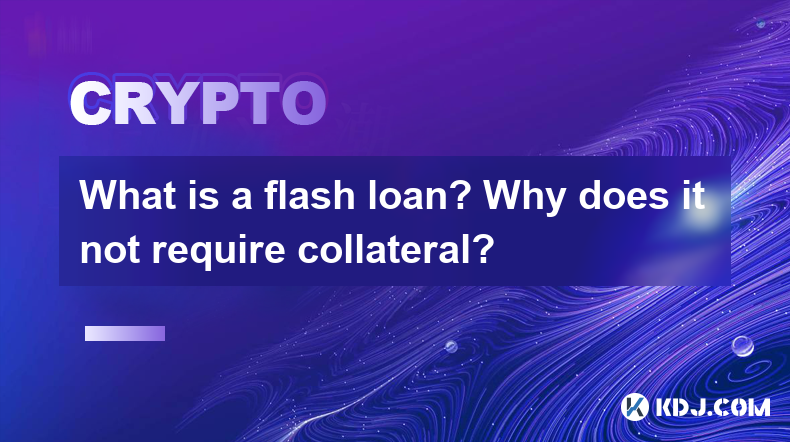
A flash loan is a type of loan that is unique to the decentralized finance (DeFi) ecosystem. It allows borrowers to take out a loan without the need for collateral, and the loan must be repaid within the same transaction. This type of loan is facilitated by smart contracts on blockchain platforms, most commonly on the Ethereum network. The concept of a flash loan is revolutionary because it enables users to borrow large sums of money instantly, without any upfront collateral, which is a stark contrast to traditional lending models.
The primary reason a flash loan does not require collateral is due to the way it is structured. The loan must be repaid within the same blockchain transaction in which it was borrowed. If the loan is not repaid, the entire transaction is reversed, and the loan never effectively takes place. This mechanism ensures that the lender is protected from default risk, as the transaction will not be validated if the loan is not repaid. This innovative approach to lending leverages the atomicity and immutability of blockchain transactions to create a secure, collateral-free lending environment.
How Does a Flash Loan Work?
To understand how a flash loan works, it's important to break down the process into its fundamental components. A flash loan begins when a user initiates a transaction on a DeFi platform that supports this type of loan. The user specifies the amount they wish to borrow and the smart contract executes the loan within the same transaction. The borrowed funds are then used for a specific purpose, such as arbitrage, refinancing, or other financial strategies, and must be repaid before the transaction is completed.
If the user successfully executes their financial strategy and repays the loan within the same transaction, the transaction is validated and recorded on the blockchain. However, if the user fails to repay the loan, the smart contract automatically reverts the entire transaction, ensuring that the lender does not suffer any loss. This process is facilitated by the smart contract's ability to execute multiple actions within a single transaction, a feature known as atomicity.
Applications of Flash Loans
Flash loans have a variety of applications within the DeFi ecosystem. One of the most common uses is arbitrage, where traders borrow funds to take advantage of price differences between different cryptocurrency exchanges. By borrowing a large amount of cryptocurrency through a flash loan, a trader can buy the asset on one exchange where it is cheaper and sell it on another exchange where it is more expensive, all within the same transaction.
Another application of flash loans is refinancing. Borrowers can use flash loans to pay off existing loans with high interest rates and then take out new loans with lower rates, thereby reducing their overall borrowing costs. This strategy can be executed quickly and efficiently, as the entire process is completed within a single transaction.
Flash loans can also be used for self-liquidation. In situations where a user's collateralized position is at risk of being liquidated, they can use a flash loan to repay their debt and avoid liquidation. This allows users to manage their positions more effectively and avoid the potential losses associated with liquidation.
Risks and Considerations
While flash loans offer significant opportunities, they also come with certain risks and considerations. One of the main risks is smart contract vulnerabilities. Since flash loans rely heavily on smart contracts, any bugs or vulnerabilities in the contract code can be exploited by malicious actors. This has led to several high-profile flash loan attacks, where hackers have drained millions of dollars from DeFi platforms.
Another consideration is the complexity of the transactions. Flash loans require a deep understanding of the underlying DeFi protocols and the ability to execute complex financial strategies within a single transaction. This can be challenging for novice users and may lead to unintended consequences if not executed correctly.
Additionally, the high transaction fees associated with flash loans can be a significant barrier to entry. Since flash loans are executed on the Ethereum network, users must pay gas fees, which can be substantial, especially during periods of high network congestion.
Examples of Flash Loan Attacks
To illustrate the potential risks associated with flash loans, it's helpful to examine some real-world examples of flash loan attacks. One notable example is the attack on the DeFi platform bZx in February 2020. Hackers used a flash loan to manipulate the price of an asset on one exchange, which triggered a liquidation on another platform, allowing them to profit from the price difference. The attack resulted in a loss of approximately $350,000 for bZx.
Another example is the attack on the Cream Finance protocol in August 2021. Hackers exploited a vulnerability in the smart contract to borrow a large amount of cryptocurrency through a flash loan and then manipulated the price of the collateral to liquidate positions and drain funds from the platform. This attack resulted in a loss of around $13 million for Cream Finance.
These examples highlight the importance of robust smart contract security and the potential risks associated with flash loans. Platforms that offer flash loans must implement stringent security measures to protect against such attacks and ensure the integrity of their protocols.
How to Execute a Flash Loan
Executing a flash loan requires a good understanding of the DeFi platform and the smart contract code. Here are the steps to execute a flash loan on a platform like Aave, one of the most popular DeFi protocols that support flash loans:
- Connect your wallet: First, connect your Ethereum wallet to the Aave platform. Ensure that your wallet has enough ETH to cover the gas fees associated with the transaction.
- Select the asset: Choose the cryptocurrency you want to borrow through the flash loan. Aave supports a variety of assets, including stablecoins and major cryptocurrencies like ETH and DAI.
- Specify the amount: Enter the amount of the asset you wish to borrow. Keep in mind that the entire transaction must be completed within the same block, so plan your strategy accordingly.
- Execute the transaction: Initiate the flash loan transaction. The smart contract will execute the loan and transfer the funds to your wallet.
- Use the funds: Use the borrowed funds for your intended purpose, such as arbitrage or refinancing. Remember that you must repay the loan within the same transaction.
- Repay the loan: Before the transaction is completed, repay the borrowed amount plus any associated fees. If the loan is not repaid, the transaction will be reverted, and the loan will not be valid.
By following these steps, you can successfully execute a flash loan on a DeFi platform like Aave. It's important to thoroughly understand the risks and complexities involved before attempting to use flash loans.
Frequently Asked Questions
Q: Can flash loans be used for illegal activities?
A: While flash loans themselves are not inherently illegal, they can be used for malicious purposes, such as exploiting vulnerabilities in smart contracts to drain funds from DeFi platforms. It's important for users to adhere to legal and ethical standards when using flash loans.
Q: Are flash loans available on all DeFi platforms?
A: No, not all DeFi platforms support flash loans. Platforms like Aave, dYdX, and Uniswap are among those that offer flash loan functionality. It's essential to check the specific features of each platform before attempting to use flash loans.
Q: How do flash loans impact the stability of the DeFi ecosystem?
A: Flash loans can both positively and negatively impact the stability of the DeFi ecosystem. On the positive side, they enable innovative financial strategies and liquidity provision. However, they can also be used to exploit vulnerabilities, leading to significant losses and instability within the ecosystem.
Q: What are the potential benefits of flash loans for individual users?
A: For individual users, flash loans offer the opportunity to execute complex financial strategies without the need for collateral. This can include arbitrage, refinancing, and self-liquidation, allowing users to optimize their financial positions and potentially increase their returns.
Disclaimer:info@kdj.com
The information provided is not trading advice. kdj.com does not assume any responsibility for any investments made based on the information provided in this article. Cryptocurrencies are highly volatile and it is highly recommended that you invest with caution after thorough research!
If you believe that the content used on this website infringes your copyright, please contact us immediately (info@kdj.com) and we will delete it promptly.
- As Traditional Finance Embraces Blockchain, FloppyPepe (FPPE) Presale Stands Out as the High-Risk/High-Reward Opportunity
- 2025-04-13 11:10:12
- Bitcoin (BTC) Realized Loss Metric Shows Early Signs of Seller Exhaustion
- 2025-04-13 11:10:12
- BitMEX Co-Founder Arthur Hayes Predicts Bitcoin (BTC) Could Skyrocket to $250,000 by the End of 2025
- 2025-04-13 11:05:14
- Solana (SOL) Price Prediction: SOL Remains a Core Asset Despite Recent Market Volatility
- 2025-04-13 11:05:14
- Taiwanese Authorities Charge 4 Executives of Steaker Platform for Allegedly Raising NT$1.48 Billion Through Unauthorized Cryptocurrency Investment Schemes
- 2025-04-13 11:05:12
- BitMEX co-founder Arthur Hayes believes one catalyst could suddenly send Bitcoin (BTC) to new all-time highs
- 2025-04-13 11:05:12
Related knowledge
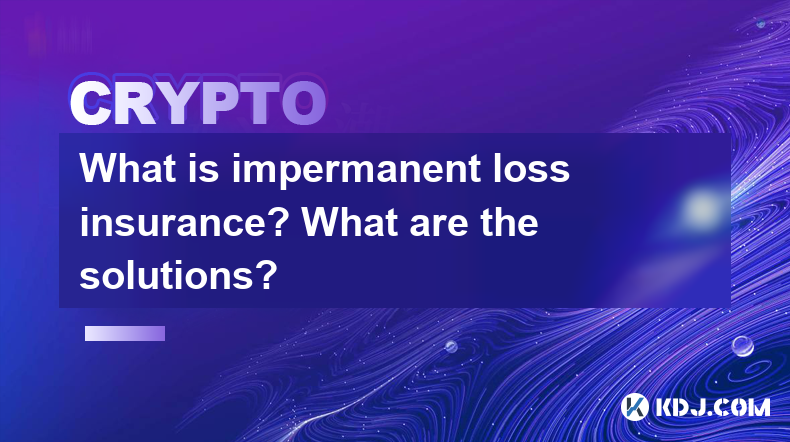
What is impermanent loss insurance? What are the solutions?
Apr 12,2025 at 01:14am
What is Impermanent Loss Insurance? What are the Solutions? Impermanent loss is a significant concern for liquidity providers in decentralized finance (DeFi) platforms. It occurs when the price of tokens in a liquidity pool changes compared to when they were deposited, leading to a potential loss if the provider decides to withdraw their liquidity. To m...
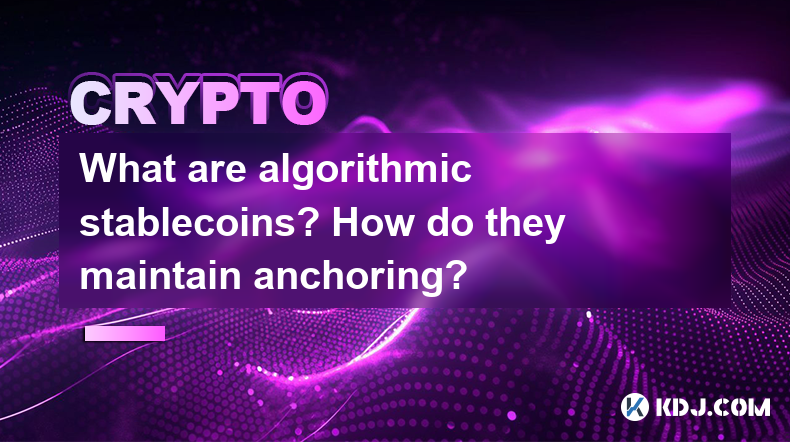
What are algorithmic stablecoins? How do they maintain anchoring?
Apr 12,2025 at 11:35am
Algorithmic stablecoins represent a fascinating and innovative segment within the cryptocurrency ecosystem. These digital assets are designed to maintain a stable value, typically pegged to a fiat currency like the US dollar, through the use of algorithms rather than traditional collateral. This approach distinguishes them from other types of stablecoin...
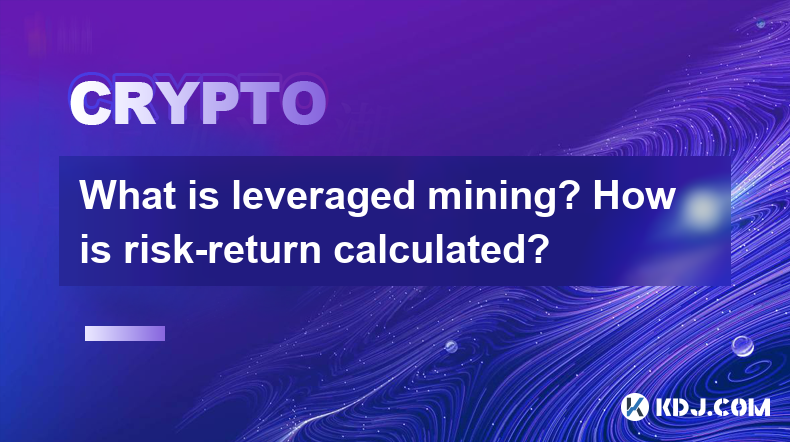
What is leveraged mining? How is risk-return calculated?
Apr 11,2025 at 04:07pm
What is Leveraged Mining? How is Risk-Return Calculated? Leveraged mining is a strategy used in the cryptocurrency space where miners borrow funds to increase their mining capacity and potential returns. This approach can amplify both profits and losses, making it a high-risk, high-reward endeavor. Understanding how to calculate the risk and return asso...
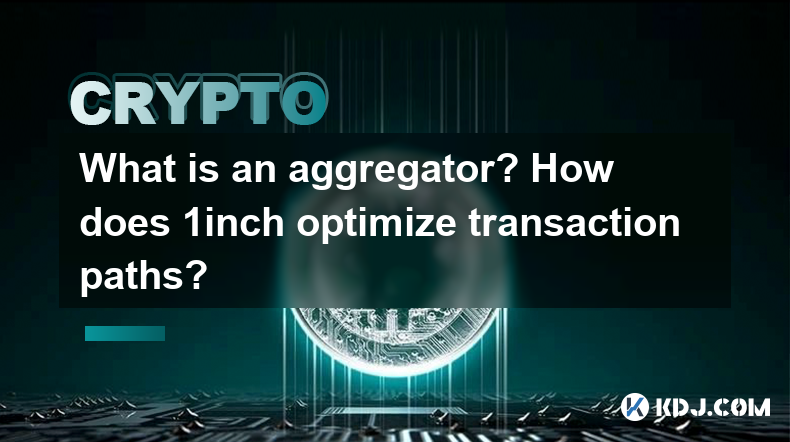
What is an aggregator? How does 1inch optimize transaction paths?
Apr 12,2025 at 05:00pm
An aggregator in the cryptocurrency space is a tool that compiles and compares data from multiple decentralized exchanges (DEXs) to find the best possible trading routes and prices for users. Aggregators are essential for traders looking to optimize their transactions, as they can automatically search through various liquidity sources to ensure the most...

What is a flash loan? Why does it not require collateral?
Apr 11,2025 at 12:57pm
A flash loan is a type of loan that is unique to the decentralized finance (DeFi) ecosystem. It allows borrowers to take out a loan without the need for collateral, and the loan must be repaid within the same transaction. This type of loan is facilitated by smart contracts on blockchain platforms, most commonly on the Ethereum network. The concept of a ...
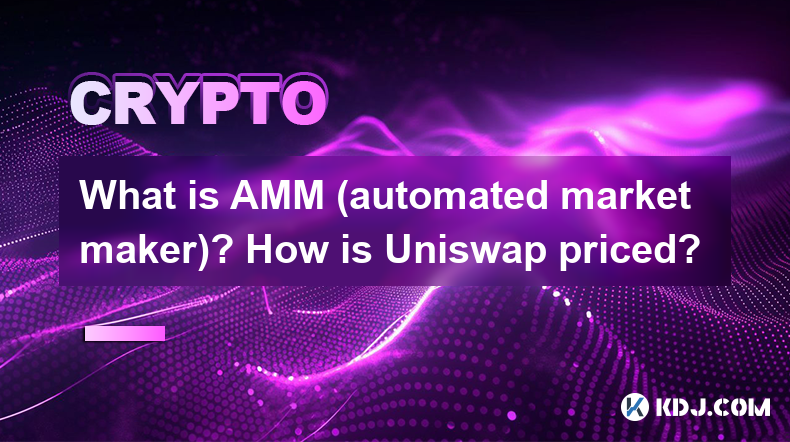
What is AMM (automated market maker)? How is Uniswap priced?
Apr 11,2025 at 06:57pm
What is AMM (Automated Market Maker)? How is Uniswap Priced? Automated Market Makers (AMMs) are a type of decentralized exchange protocol that use algorithms to price assets instead of traditional order books. The most well-known AMM is Uniswap, which has become a cornerstone of the decentralized finance (DeFi) ecosystem. This article will delve into th...

What is impermanent loss insurance? What are the solutions?
Apr 12,2025 at 01:14am
What is Impermanent Loss Insurance? What are the Solutions? Impermanent loss is a significant concern for liquidity providers in decentralized finance (DeFi) platforms. It occurs when the price of tokens in a liquidity pool changes compared to when they were deposited, leading to a potential loss if the provider decides to withdraw their liquidity. To m...

What are algorithmic stablecoins? How do they maintain anchoring?
Apr 12,2025 at 11:35am
Algorithmic stablecoins represent a fascinating and innovative segment within the cryptocurrency ecosystem. These digital assets are designed to maintain a stable value, typically pegged to a fiat currency like the US dollar, through the use of algorithms rather than traditional collateral. This approach distinguishes them from other types of stablecoin...

What is leveraged mining? How is risk-return calculated?
Apr 11,2025 at 04:07pm
What is Leveraged Mining? How is Risk-Return Calculated? Leveraged mining is a strategy used in the cryptocurrency space where miners borrow funds to increase their mining capacity and potential returns. This approach can amplify both profits and losses, making it a high-risk, high-reward endeavor. Understanding how to calculate the risk and return asso...

What is an aggregator? How does 1inch optimize transaction paths?
Apr 12,2025 at 05:00pm
An aggregator in the cryptocurrency space is a tool that compiles and compares data from multiple decentralized exchanges (DEXs) to find the best possible trading routes and prices for users. Aggregators are essential for traders looking to optimize their transactions, as they can automatically search through various liquidity sources to ensure the most...

What is a flash loan? Why does it not require collateral?
Apr 11,2025 at 12:57pm
A flash loan is a type of loan that is unique to the decentralized finance (DeFi) ecosystem. It allows borrowers to take out a loan without the need for collateral, and the loan must be repaid within the same transaction. This type of loan is facilitated by smart contracts on blockchain platforms, most commonly on the Ethereum network. The concept of a ...

What is AMM (automated market maker)? How is Uniswap priced?
Apr 11,2025 at 06:57pm
What is AMM (Automated Market Maker)? How is Uniswap Priced? Automated Market Makers (AMMs) are a type of decentralized exchange protocol that use algorithms to price assets instead of traditional order books. The most well-known AMM is Uniswap, which has become a cornerstone of the decentralized finance (DeFi) ecosystem. This article will delve into th...
See all articles























































































